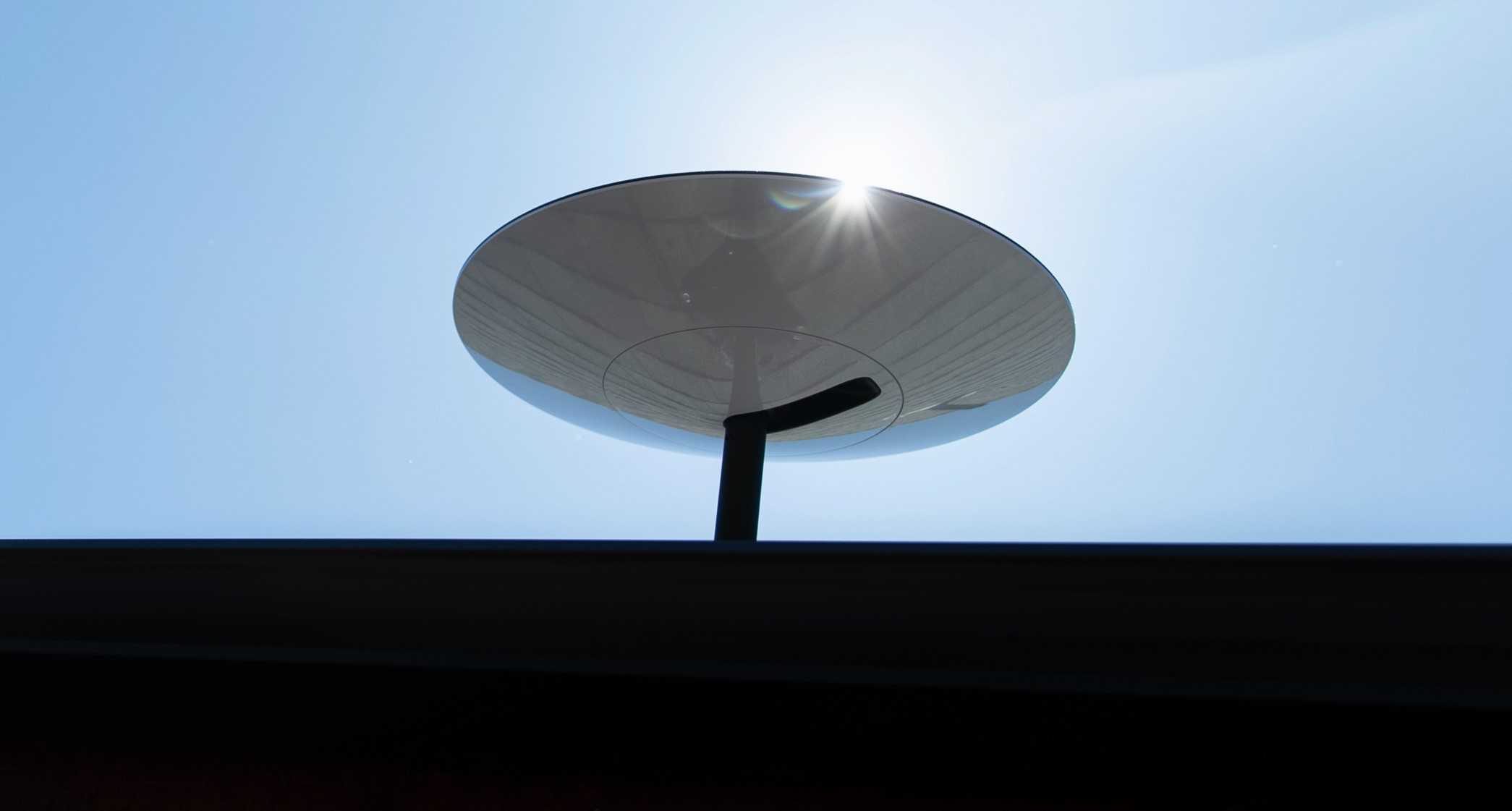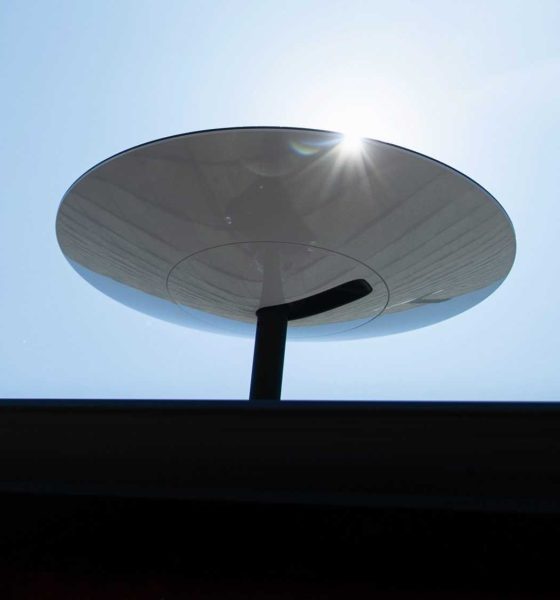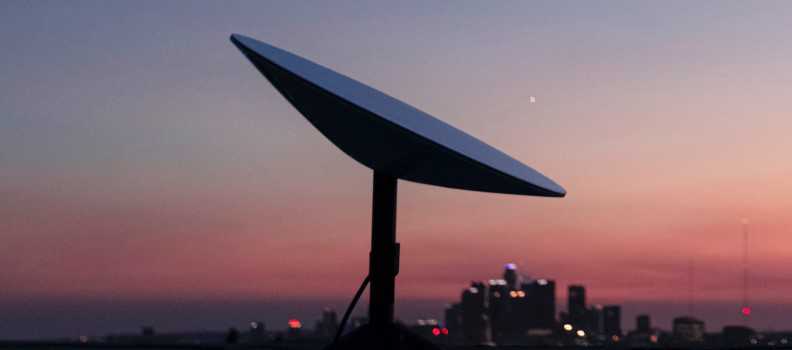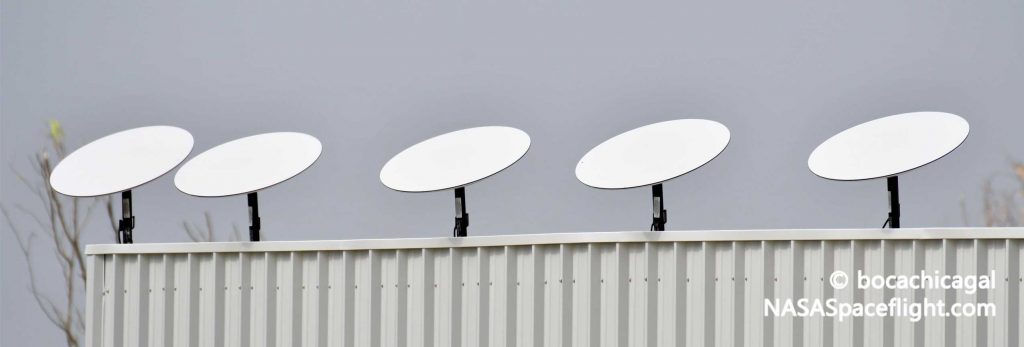

News
SpaceX ‘Starlink router’ approved by the FCC
A critical subcomponent of SpaceX’s Starlink ‘user terminal’ has received FCC approval, shedding additional light on the antennas and hardware customers around the world will use to access the orbital internet.
Deemed SpaceX’s “Starlink Router” in FCC regulatory approvals published on July 14th, the documents reveal that user terminals will ship to customers with a WiFi router – possibly designed and built by SpaceX itself – in the box. Public comments on social media after the details broke have quickly revealed that many prospective customers don’t understand why SpaceX would include a WiFi router – a common, off-the-shelf consumer device many millions of households likely already own – as part of the antenna.
Comments made by CEO Elon Musk and other SpaceX executives over the last year or so help to explain the reason behind that. In a word: simplicity.

Musk has repeatedly noted that Starlink user terminals will be extremely easy to set up out of the box. To gain access to the network, customers will simply have to unbox the antenna, install it anywhere that offers a clear view of the sky, and plug it into a power source with a single cable.
Of course, things are never as simple as they might seem, and installing a Starlink antenna is going to be a bit more complicated – although still extremely easy, by all appearances. The July 14th FCC filings and some not-yet-published details gleaned from SpaceX’s Starlink.com website offer some useful insight.
Customers will have four options for installing the antenna, taking between five minutes and three hours to complete. Once the antenna is secured, customers will plug in a single cable into the terminal and route that cable to a convenient location inside the building that needs service. Based on SpaceX’s recent FCC filings, that cable will plug into a Starlink router capable of delivering power over ethernet (PoE) to the antenna, allowing a single cable to deliver power and connectivity. The router, of course, will have to plug into a wall outlet, meaning that the user terminally technically needs two cables, but that distinction is splitting hairs.

Once connected to power and secured to a roof, fence, yard, or other miscellaneous object or location with a clear view of the sky, the Starlink user terminal will use built-in motors to point itself in the right direction, while the antenna itself – a flat-panel phased array – will likely be able to electronically steer itself for fine-tuning and satellite tracking. Thanks to the included WiFi router, customers will likely be able to simply connect to the user terminal to complete any necessary setup tasks like signing into a Starlink account or changing the network name and password.
SpaceX will almost certainly allow more savvy customers to connect the Starlink user terminal to an existing WiFi router or home network, as chances are that the Starlink router will be relatively simple. That would allow SpaceX to keep the base user terminal as simple and affordable as possible while still allowing customers with more complex needs to supply their own advanced networking equipment.
For now, SpaceX continues to target Summer 2020 for its first closed and public Starlink beta tests, in which prospective customers will be loaned Starlink user terminals and given free service in return for signing a non-disclosure agreement and providing feedback. SpaceX’s next Starlink launch has been chronically delayed since mid-June but is expected to launch no earlier than July 20-25. Barring more serious delays, SpaceX has another 5-10 Starlink launches planned for the second half of 2020.
Check out Teslarati’s Marketplace! We offer Tesla accessories, including for the Tesla Cybertruck and Tesla Model 3.

News
Tesla FSD fleet is nearing 7 billion total miles, including 2.5 billion city miles
As can be seen on Tesla’s official FSD webpage, vehicles equipped with the system have now navigated over 6.99 billion miles.

Tesla’s Full Self-Driving (Supervised) fleet is closing in on almost 7 billion total miles driven, as per data posted by the company on its official FSD webpage.
These figures hint at the massive scale of data fueling Tesla’s rapid FSD improvements, which have been quite notable as of late.
FSD mileage milestones
As can be seen on Tesla’s official FSD webpage, vehicles equipped with the system have now navigated over 6.99 billion miles. Tesla owner and avid FSD tester Whole Mars Catalog also shared a screenshot indicating that from the nearly 7 billion miles traveled by the FSD fleet, more than 2.5 billion miles were driven inside cities.
City miles are particularly valuable for complex urban scenarios like unprotected turns, pedestrian interactions, and traffic lights. This is also the difference-maker for FSD, as only complex solutions, such as Waymo’s self-driving taxis, operate similarly on inner-city streets. And even then, incidents such as the San Francisco blackouts have proven challenging for sensor-rich vehicles like Waymos.
Tesla’s data edge
Tesla has a number of advantages in the autonomous vehicle sector, one of which is the size of its fleet and the number of vehicles training FSD on real-world roads. Tesla’s nearly 7 billion FSD miles then allow the company to roll out updates that make its vehicles behave like they are being driven by experienced drivers, even if they are operating on their own.
So notable are Tesla’s improvements to FSD that NVIDIA Director of Robotics Jim Fan, after experiencing FSD v14, noted that the system is the first AI that passes what he described as a “Physical Turing Test.”
“Despite knowing exactly how robot learning works, I still find it magical watching the steering wheel turn by itself. First it feels surreal, next it becomes routine. Then, like the smartphone, taking it away actively hurts. This is how humanity gets rewired and glued to god-like technologies,” Fan wrote in a post on X.
News
Tesla starts showing how FSD will change lives in Europe
Local officials tested the system on narrow country roads and were impressed by FSD’s smooth, human-like driving, with some calling the service a game-changer for everyday life in areas that are far from urban centers.

Tesla has launched Europe’s first public shuttle service using Full Self-Driving (Supervised) in the rural Eifelkreis Bitburg-Prüm region of Germany, demonstrating how the technology can restore independence and mobility for people who struggle with limited transport options.
Local officials tested the system on narrow country roads and were impressed by FSD’s smooth, human-like driving, with some calling the service a game-changer for everyday life in areas that are far from urban centers.
Officials see real impact on rural residents
Arzfeld Mayor Johannes Kuhl and District Administrator Andreas Kruppert personally tested the Tesla shuttle service. This allowed them to see just how well FSD navigated winding lanes and rural roads confidently. Kruppert said, “Autonomous driving sounds like science fiction to many, but we simply see here that it works totally well in rural regions too.” Kuhl, for his part, also noted that FSD “feels like a very experienced driver.”
The pilot complements the area’s “Citizen Bus” program, which provides on-demand rides for elderly residents who can no longer drive themselves. Tesla Europe shared a video of a demonstration of the service, highlighting how FSD gives people their freedom back, even in places where public transport is not as prevalent.
What the Ministry for Economic Affairs and Transport says
Rhineland-Palatinate’s Minister Daniela Schmitt supported the project, praising the collaboration that made this “first of its kind in Europe” possible. As per the ministry, the rural rollout for the service shows FSD’s potential beyond major cities, and it delivers tangible benefits like grocery runs, doctor visits, and social connections for isolated residents.
“Reliable and flexible mobility is especially vital in rural areas. With the launch of a shuttle service using self-driving vehicles (FSD supervised) by Tesla in the Eifelkreis Bitburg-Prüm, an innovative pilot project is now getting underway that complements local community bus services. It is the first project of its kind in Europe.
“The result is a real gain for rural mobility: greater accessibility, more flexibility and tangible benefits for everyday life. A strong signal for innovation, cooperation and future-oriented mobility beyond urban centers,” the ministry wrote in a LinkedIn post.
News
Tesla China quietly posts Robotaxi-related job listing
Tesla China is currently seeking a Low Voltage Electrical Engineer to work on circuit board design for the company’s autonomous vehicles.

Tesla has posted a new job listing in Shanghai explicitly tied to its Robotaxi program, fueling speculation that the company is preparing to launch its dedicated autonomous ride-hailing service in China.
As noted in the listing, Tesla China is currently seeking a Low Voltage Electrical Engineer to work on circuit board design for the company’s autonomous vehicles.
Robotaxi-specific role
The listing, which was shared on social media platform X by industry watcher @tslaming, suggested that Tesla China is looking to fill the role urgently. The job listing itself specifically mentions that the person hired for the role will be working on the Low Voltage Hardware team, which would design the circuit boards that would serve as the nervous system of the Robotaxi.
Key tasks for the role, as indicated in the job listing, include collaboration with PCB layout, firmware, mechanical, program management, and validation teams, among other responsibilities. The role is based in Shanghai.
China Robotaxi launch
China represents a massive potential market for robotaxis, with its dense urban centers and supportive policies in select cities. Tesla has limited permission to roll out FSD in the country, though despite this, its vehicles have been hailed as among the best in the market when it comes to autonomous features. So far, at least, it appears that China supports Tesla’s FSD and Robotaxi rollout.
This was hinted at in November, when Tesla brought the Cybercab to the 8th China International Import Expo (CIIE) in Shanghai, marking the first time that the autonomous two-seater was brought to the Asia-Pacific region. The vehicle, despite not having a release date in China, received a significant amount of interest among the event’s attendees.








